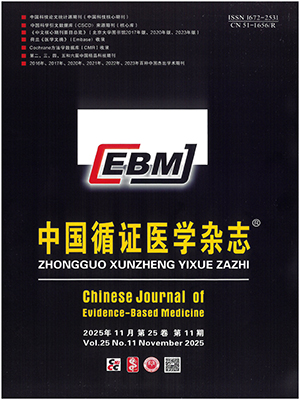| 1. |
?焦靈利.醫療器械不良事件監測與風險管理.中國醫療器械信息, 2008, 14(12):37-40.
|
| 2. |
崔佳.基于風險管理的我國醫療器械不良事件監測政策優化理論分析.中國藥物警戒, 2009, 6(2):96-99.
|
| 3. |
方濤.基層醫療器械不良事件監測及風險管理探討.中國藥物警戒, 2009, 6(5):302-304.
|
| 4. |
Top 10 Health Technology Hazards for 2013. Health Devices, 2012, 41(11):1-25.
|
| 5. |
歐陽昭連, 池慧, 楊國忠.在用醫療器械風險管理問題及對策研究㈠.中國醫療器械信息, 2007, 13(12):43-47.
|
| 6. |
程述森, 石應康, 金蓓, 等.醫療器械的風險管理與質量控制.中國循證醫學雜志, 2010, 10(6):754-755.
|
| 7. |
李傳佳, 王天旭, 崔澤實.醫學裝備預防維護在醫療風險管理中作用的探討.中國醫學裝備, 2011, 8(6):37-43.
|
| 8. |
崔雷, 劉偉, 閆雷, 等.文獻數據庫中書目信息共現挖掘系統的開發.現代圖書情報技術, 2008, (8):70-74.
|
| 9. |
http://glaros.dtc.umn.edu/gkhome/views/cluto.
|
| 10. |
Sherrard LJ. Protection from whatever they face. Occup Health Saf, 2011, 80(11):14, 16-7.
|
| 11. |
Sherrard LJ. Those glaring issues. Occup Health Saf, 2011, 80(2):22, 24.
|
| 12. |
Naylor AR, Gaines PA, Rothwell PM. Who benefits most from intervention for asymptomatic carotid stenosis:patients or professionals? Eur J Vasc Endovasc Surg, 2009, 37(6):625-632.
|
| 13. |
Naylor AR. Riding on the CREST of a Wave! Eur J Vasc Endovasc Surg, 2011, 39(5):523-526.
|
| 14. |
Naylor AR. Endarterectomy versus carotid stenting. Br J Surg, 2012, 99(2):149-151.
|
| 15. |
Moss AJ. Life versus death. Circulation, 2008, 117(15):1912-1913.
|
| 16. |
Moss AJ. Should everyone with an ejection fraction less than or equal to 30% receive an implantable cardioverter-defibrillator? Everyone with an ejection fraction < or=30% should receive an implantable cardioverter-defibrillator. Circulation, 2005, 111(19): 2537-2549.
|
| 17. |
Eggebrecht H, Sch?fer U, Treede H, et al. Valve-in-valve transcatheter aortic valve implantation fordegenerated bioprosthetic heart valves. JACC Cardiovasc Interv, 2011, 4(11):1218-1227.
|
| 18. |
Bedogni F, Laudisa ML, Pizzocri S, et al. Transcatheter valve-invalve implantation using Corevalve Revalving System for failed surgical aortic bioprostheses. JACC Cardiovasc Interv, 2011, 4(11): 1228-1234.
|
| 19. |
Seiffert M, Conradi L, Baldus S, et al. Impact of patient-prosthesis mismatch after transcatheter aortic valve-in-valve implantation in degenerated bioprostheses. J Thorac Cardiovasc Surg, 2012, 143(3): 617-624.
|
| 20. |
Eggebrecht H, Sch?fer U, Treede H, et al. Valve-in-valve transcatheter aortic valve implantation fordegenerated bioprosthetic heart valves. JACC Cardiovasc Interv, 2011, 4(11):1218-1227.
|
| 21. |
Choi CU, Rha SW, Chen KY, et al. Lack of clinical benefit of improved angiographic results with sirolimus-eluting stents compared with paclitaxel and zotarolimus-eluting stents in patients with acute myocardialinfarction undergoing percutaneous coronary intervention. Circ J, 2009, 73(12):2229-2235.
|
| 22. |
Williams DO, Abbott JD, Kip KE. DES cover Investigators. Outcomes of 6906 patients undergoing percutaneous coronary intervention in the era of drug-eluting stents:report of the DEScover Registry. Circulation, 2006, 114(20):2154-2162.
|
| 23. |
Casserly IP. Trans-radial treatment of in-stent restenosis of the superficial femoral artery--the importance of case selection. Catheter Cardiovasc Interv, 2009, 74(3):499.
|
| 24. |
Duwayri Y, Vallabhaneni R, Kirby JP, et al. Early protection and compression of residual limbs mayimprove and accelerate prosthetic fit:a preliminary study. Ann Vasc Surg, 2012, 26(2):242-249.
|
| 25. |
Amelot M, Foucault A, Scanu P, et al. Comparison of outcomes in patients with abandoned versus extracted implantable cardioverter defibrillator leads. Arch Cardiovasc Dis, 2011, 104(11):572-577.
|
| 26. |
Kato TS, Schulze PC, Yang J, et al. Pre-operative and post-operative risk factors associated with neurologic complications in patients with advanced heart failure supported by a left ventricular assist device. J Heart Lung Transplant, 2012, 31(1):1-8.
|
| 27. |
Sasaki T, Hansford R, Zviman MM, et al. Quantitative assessment of artifacts on cardiac magnetic resonance imaging of patients with pacemakers and implantable cardioverter-defibrillators. Circ Cardiovasc Imaging, 2011, 4(6):662-670.
|
| 28. |
D'Arpa S, Cordova A, Pignatti M, et al. Freestyle pedicled perforator flaps:safety, prevention of complications, and management based on 85 consecutive cases. Plast Reconstr Surg, 2011, 128(4):892-906.
|
| 29. |
Ostergard DR. Evidence-based medicine for polypropylene mesh use compared with native tissue vaginal prolapse repair. Urology, 2012, 79(1):12-14.
|
| 30. |
Sherrard LJ. Guidelines for a quality program. Occup Health Saf, 2008, 77(7):84, 86.
|
| 31. |
McKinney M. High-tech hazards. Alarm hazards tops ECRI list of health dangers. Mod Healthc, 2011, 41(45):18.
|
| 32. |
Marchessault L, Hoagland H. Making sense of electrical PPE. Occup Health Saf, 2011, 80(10):34, 36, 38.
|
| 33. |
王蘭明.醫療器械不良事件監測與風險管理淺議.中國藥房, 2003, 14(9):516-519.
|
| 34. |
高小燕, 李素敏, 崔澤實, 等.醫學裝備風險管理文獻的計量研究.中國醫學裝備, 2013, 10(4):12-14.
|




